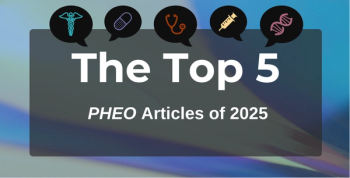
IRA Insulin Cap Could Have Saved Medicare Beneficiaries Millions in 2020
An HHS report said that if the Inflation Reduction Act (IRA) had been implemented in 2020, Medicare Part D beneficiaries could have saved a total of $734 million, averaging out to about $500 per member.
A
An HHS report revealed that if the Inflation Reduction Act (IRA) had been implemented in 2020, Medicare Part D and Part B beneficiaries could have saved a total of $734 million and $27 million, respectively, on insulin products.
When the IRA was passed in 2020, it included a provision to cap Medicare beneficiaries' out-of-pocket (OOP) costs for reference and biosimilar insulin products to $35. A measure to extend the cap to patients covered by private insurance companies
On average, the researchers estimated that 1.5 million beneficiaries covered by Part B or Part D plans missed out on $500 in savings on insulin per member per year by the provision not being in effect in 2020. The report was conducted by the HHS Office of the Assistant Secretary for Planning and Evaluation.
“The Biden-Harris Administration is committed to lowering health care costs and increasing access to high-quality, affordable health care, and the Inflation Reduction Act is helping us do just that…. Thanks to this historic law, people who get their insulin through Medicare won’t have to pay more than $35 for a month’s supply. No one should have to skip or ration their insulin because they can’t afford it,” said Xavier Becerra, HHS secretary, in a statement.
The states with the most people with Medicare Part D or Part B that will benefit from the new provision are Texas (n = 114,000), California (n = 108,000), and Florida (n = 90,000). However, the states that will likely have the highest average annual OOP savings per beneficiary are North Dakota ($805), Iowa ($725), and South Dakota ($725).
“Americans are seeing a strong economy where they live…they are seeing prices down at their pharmacies…. I am more confident than ever that America’s best days are ahead,” commented President Joe Biden in a
The report sent to Congress examined the role that insulin plays in diabetes treatment and reviewed evidence on how the cost of insulin affects treatment adherence and downstream health consequences. Also included were some policy efforts that could improve the affordability of insulin.
In 2019, about 37% of insulin prescriptions filled by people with Medicare required cost-sharing that exceeded $35 per fill, of which 24% of fills exceeded $70 per fill.
A global survey from 2019 found that 25.9% of US respondents reported having
The insulin OOP cap was originally
According to Becerra, the 1.5 million beneficiaries now impacted by the IRA’s cap do not include patients who already had their insulin costs capped at $35 through the Senior Savings Model. “Overall, we're looking at all Medicare beneficiaries who are taking insulin. And we're looking to see what they were actually paying out-of-pocket…. We're only counting the 1.5 million as folks who were paying more than $35 a month.”
Newsletter
Stay ahead of policy, cost, and value—subscribe to AJMC for expert insights at the intersection of clinical care and health economics.







































